An inside look at the APES field trip to Spring Valley
The AP Environmental Science class, a popular science course for seniors at Conant High School, went on their first field trip of the year to Spring Valley, the “refuge of 135 acres of fields, forests, marshes and streams,” on Thursday, September 19.
Crier reporter, Leyla Yurtsever, ‘25, went on this field trip with APES teacher Jennifer Stanish. Here is a behind-the scenes look.
Join me on our Spring Valley day!
We had to arrive at school like normal at 8:15. Then, Stanish previewed the field trip, including a visit to the creek and the bog, as well as expectations, and we boarded the bus at around 8:30 a.m. . To my surprise, it only took about five minutes to get to Spring Valley. I did not know we had such a vast ecosystem right in our backyard.
When we got there, they led us into a classroom-type area. There, we had to complete an activity in which we modeled the survival and thrive rates of various species in an ecosystem using colored cubes. This was a nice connection to topics we had already discussed in class, like biodiversity and species diversity.
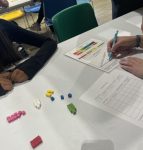 Anum Saif | Conant Crier
Anum Saif | Conant Crier After about 20 minutes of talking through the worksheet as a class, we were finally ready to venture out into the wild! We split into two groups (boys and girls, coincidentally) to make the activities more manageable for our guides. The girls picked out boots to go to the creek first, and the boys started off with waders to go to the bog.
Then, we began our trek to the creek where we were going to measure data about the ecosystem. I was expecting the weather to be very hot, but it was actually pretty good, which made the walk very enjoyable! This is when I began to appreciate the opportunity to be out in nature (rather than sitting at a desk all day).
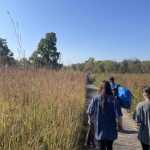 Leyla Yurtsever | Conant Crier
Leyla Yurtsever | Conant Crier
We passed a buckthorn tree with berries, but our guide said they were laxatives so eating them would be like eating a lot of Taco Bell, so we stayed away from them!
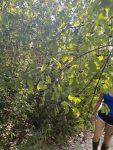 Anum Saif | Conant Crier
Anum Saif | Conant Crier Buckthorn tree
After about seven minutes of walking, we arrived at the creek! We picked out partners to test samples of the water for pH levels and put on our boots (most of which were too big for us). Then we stepped into the creek! One partner had to stick a meter into the water, while the other tracked the data on the GraphicalGW app on their phone.
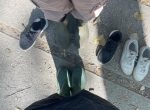 Leyla Yurtsever | Conant Crier
Leyla Yurtsever | Conant Crier Me and Anum Saif, ’25, in our boots!
 Leyla Yurtsever | Conant Crier
Leyla Yurtsever | Conant Crier 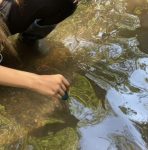 Leyla Yurtsever | Conant Crier
Leyla Yurtsever | Conant Crier Kiah Shah, ’25, testing pH in the creek.
Then, we continued to explore the creek! Most of the time, the water was below knee level, so I was able to stay dry.
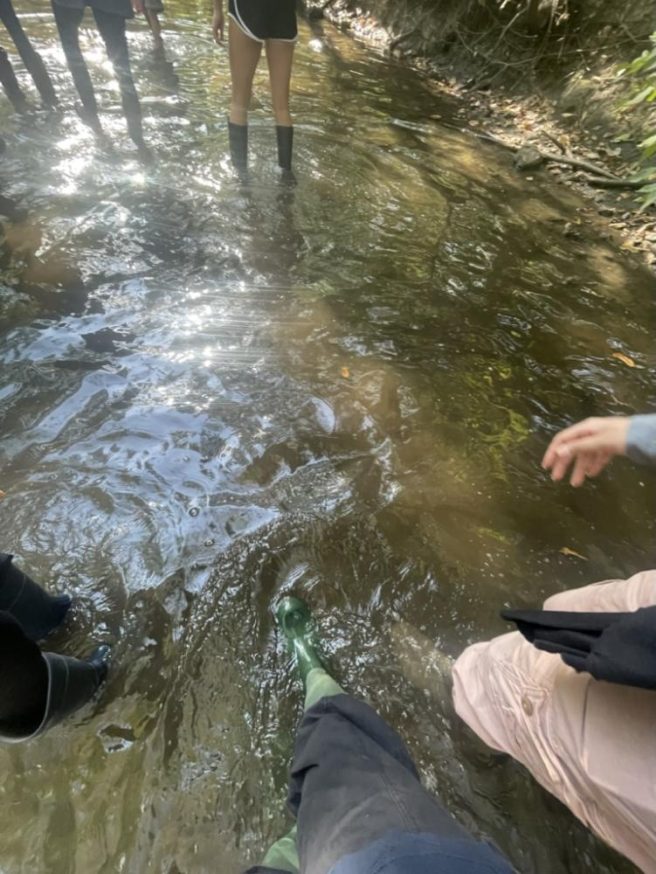 Leyla Yurtsever | Conant Crier
Leyla Yurtsever | Conant Crier
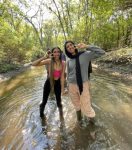 Leyla Yurtsever | Conant Crier
Leyla Yurtsever | Conant Crier Shah (left) and Saif (right).
After about 25 minutes of walking through the water, we encountered a bridge that we could climb up to get out. Some of my friends and I decided we had adventured enough, so we got out at this point, but many of our classmates continued on. The water got deeper and muddier the farther they went. Apparently, my boots were of good quality because they managed to keep my feet dry, but I watched some of my classmates take off their boots and pour out liters of water! Also, many of their pants were completely soaked by the time they got out of the creek.
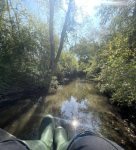 Leyla Yurtsever | Conant Crier
Leyla Yurtsever | Conant Crier 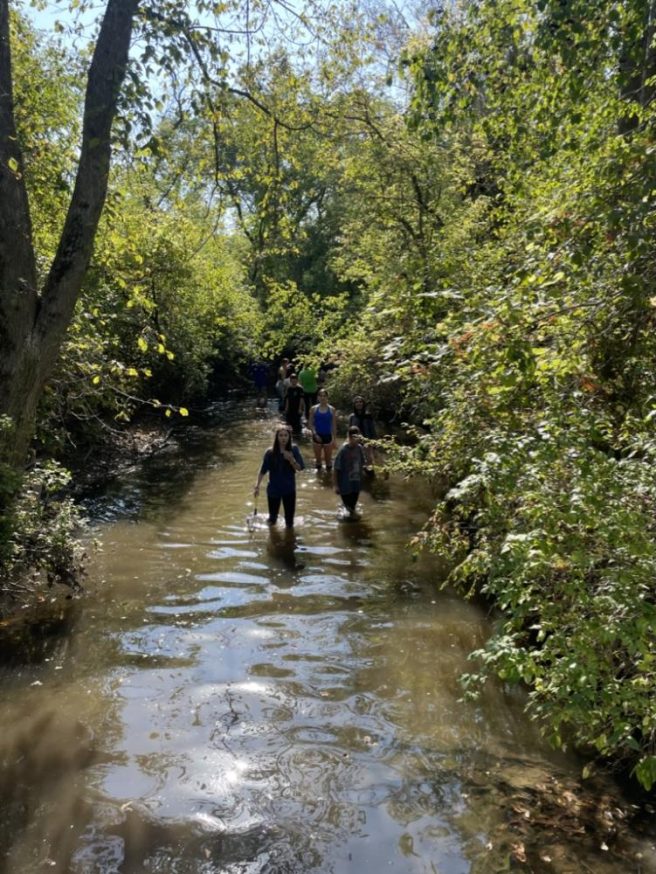 Leyla Yurtsever | Conant Crier
Leyla Yurtsever | Conant Crier 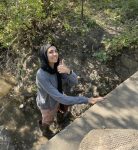 Leyla Yurtsever | Conant Crier
Leyla Yurtsever | Conant Crier
After the adventurers turned around and finally climbed out, we took off our boots and started walking to the bog, where some of my classmates got into the waders the other group had left behind to collect more pH samples.
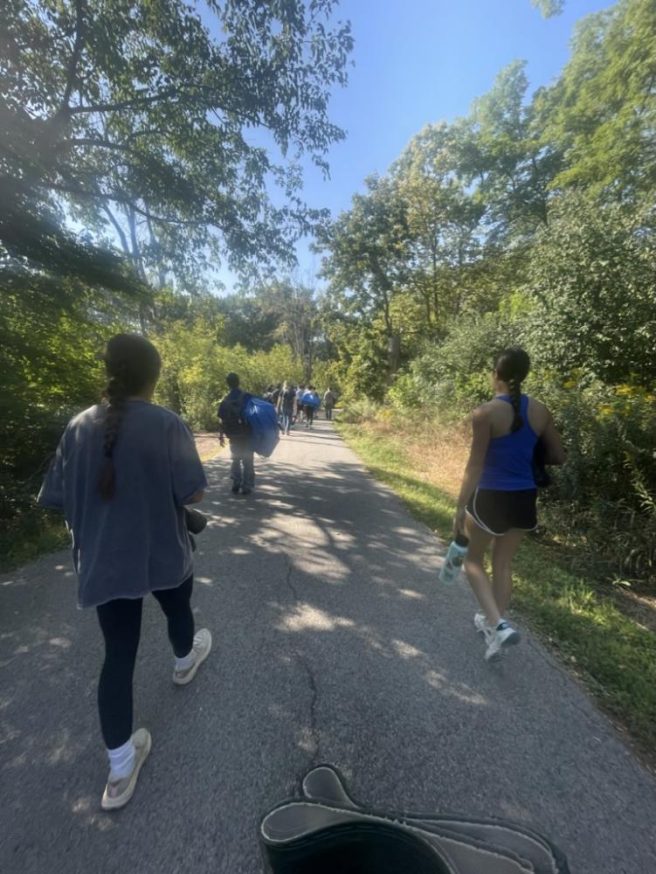 Leyla Yurtsever | Conant Crier
Leyla Yurtsever | Conant Crier  Leyla Yurtsever | Conant Crier
Leyla Yurtsever | Conant Crier Saif in her wader before she went in the bog.
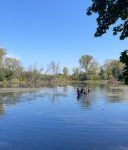 Leyla Yurtsever | Conant Crier
Leyla Yurtsever | Conant Crier The bog was pretty deep, but four of my classmates went all in! Apparently all of them fell into the water at least once, so they were pretty soaked by the time they climbed out of the bog and met up with those of us who had stayed on land. Once we all reunited, we went to a different part of the bog to look for different species using nets.
 Anum Saif | Conant Crier
Anum Saif | Conant Crier Me looking for critters in the bog.
Unfortunately, I couldn’t find anything besides weeds and clam shells, but I didn’t really mind because it was finally time for lunch! However, we had a long walk back to the picnic area, and we had to carry the heavy waders for half of the trek to a random minibus parked on the side of the track.
At about 11:45 a.m., we got to the picnic area and ate the lunches we brought from home, and then the guides made a campfire for us! Our teachers had also brought marshmallows, graham crackers, and chocolate, so we made s’mores!
After about an hour-long break, it was time to get back to work! We walked to the forest one last time towards the buckthorn (laxative berry) trees, which are an invasive species. Our task for the next hour was to cut down as many of these trees as we could, as they harm the ecosystem around them by taking up too much space and resources. They set out an array of pruners, gloves, goggles, and grafting budding knives for us to choose from.
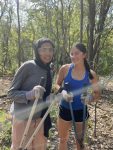 Leyla Yurtsever | Conant Crier
Leyla Yurtsever | Conant Crier Saif (left) and Charlotte Wolf, ‘25, (right) with their pruners and goggles.
We were also taught how to identify buckthorn trees and differentiate between them and other species in the area. Then, we got to work, cutting down trees and carrying them to a big pile on the other side of the track for woodworkers to take. Honestly, this was tiring but very rewarding and cool! I had never done anything like this before.
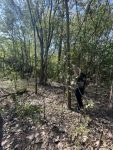 Leyla Yurtsever | Conant Crier
Leyla Yurtsever | Conant Crier
As a class, we produced a very large pile of buckthorn trees, so I’d say we were successful.
 Leyla Yurtsever | Conant Crier
Leyla Yurtsever | Conant Crier
Finally, we headed back to headquarters and boarded our bus a little after 2:00 p.m.. We got to school at 2:15 and recapped the field trip while waiting for eighth hour to start.
Overall, I really enjoyed this field trip! It was definitely very fun to take a day off of school and explore nature. Some advice for future APES students: the more you engage yourself and participate in the activities, the more fun you’ll have!

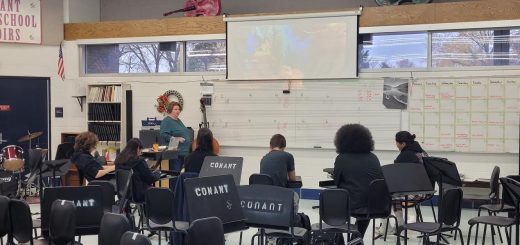


Recent Comments